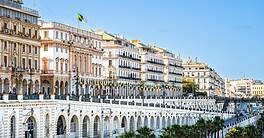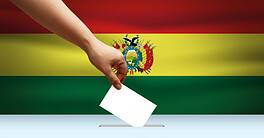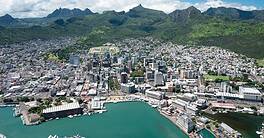Of late, Bulgaria has been one of the fastest growing economies in southeastern Europe. But foreign investors are looking for structural reforms before returning.
At first glance, Bulgaria, one of the poorest countries in the EU, might not seem like an obvious destination for foreign direct investment (FDI), given its reputation for slow-moving bureaucracy, limited transparency, and political instability. And since 1985, the population has declined from about nine million to around 6.7 million, fueling a growing shortage of skilled labor.
Scratch below the surface, however, and the terrain is more intriguing.
A strategic location in southeastern Europe on the edge of the Black Sea, a well-educated workforce—despite the labor shortages—and an economy fully integrated with the European mainstream are all positives. So too are a flat corporate and income tax rate of just 10% and a local currency—the lev—tied by a currency board to the euro.
This tie to the euro has helped keep inflation low and links Bulgaria to the eurozone. Assuming Bulgaria can keep inflation within the 2.5%-3% band and the European Commission and European Central Bank give the green light later this year, it will join the eurozone in 2026.
“The recent growth story is one of the best in the region, along with Croatia,” says Radu Cracan, associate economist at the European Bank for Reconstruction and Development (EBRD), “led by domestic consumption and public sector wage increases; whilst construction, particularly in the residential sector in Sofia and other cities, has been booming. Mortgage demand jumped 30% year on year in January.”
| Vital Statistics |
|---|
| Location: Southeastern Europe, adjacent to the Black Sea |
| Neighbors: Romania, Greece, Turkey, Serbia, North Macedonia |
| Capital city: Sofia |
| Population (2025): 6.7 million |
| Official language: Bulgarian |
| GDP per capita (2024): $18,460 |
| GDP growth (2024, est.): 2.3% |
| Inflation (2025): 2.6% (IMF) |
| Gross Government Debt: 25.4% of GDP (IMF) |
| Currency: Lev |
| Investment promotion agency: InvestBulgaria (investbg.government.bg) |
| Investment incentives: Equal treatment of foreign and domestic investors; investment encouraged in manufacturing, services, high technology, education, and human resource development; purchase of municipal or state-owned land without tender; state financing for basic infrastructure and training new staff; reimbursement for employer’s portion of social security payments; tax incentives for public-private partnerships; grants for R&D; special economic zones; special incentives in economically disadvantaged regions. |
| Corruption Perceptions Index (2024): 76 (out of 180 countries) |
| Political risk: Political instability constant; seven inconclusive elections in four years; in January, minority coalition government formed, headed by Prime Minister Rosen Zhelyazkov, includes pro-Russia party; controversy over miscount of votes in October parliamentary election; new election this year probable; priorities include administrative reform, bolstering rule of law, health care/education reform. |
| Security risk: Bulgaria enjoys generally good relations with its neighbors and is a member of NATO and the EU. It joined the Schengen Area on January 1, 2025, and hopes to join the eurozone on January 1, 2026 provided it is found to have met the economic criteria. |
| Foreign Direct Investment: Stock of FDI: $57.4 billion, inflows = 2.8% of GDP (Figs 2024, IMD World Competitiveness Survey) |
| Pros |
|---|
| Member of NATO, EU, Schengen Area; hopes to join eurozone January 1, 2026. |
| Location in strategic area of southeastern Europe with links to neighbors. |
| Diversified economy focused on information and communications technologies, tourism, business services, and transport. |
| Cons |
|---|
| Poor transparency and corporate governance remain serious concerns, as does excessive bureaucracy. |
| Infrastructure development lags other EU countries. |
| Skilled labor shortages are a growing concern. |
Sources: Bulgarian Central Bank, EBRD, Fitch, Government of Canada Global Travel Advisory, IMD World Competitiveness Center, IMF, InvestBulgaria, Transparency International, US State Department, World Bank, World Population Review
For more information on Bulgaria, check Global Finance’s Bulgaria GDP report.
In recent years the economy has refocused toward electronics, information technology, sustainable energy, and health-life sciences, all areas where FDI has been flowing. The Trakia Economic Zone in south-central Bulgaria is now southeastern Europe’s biggest industrial development, attracting some €3 billion (about $3.24 billion) in investment from the likes of ABB, Schneider Electric, Ferrero, Osram, and Kaufland.
Prior to the 2008 financial crisis, Cracan notes, “manufacturing, tourism, and construction attracted large-scale FDI. But over the past few years, this has shifted, with electronics, software development and outsourcing, and automotive parts now the main recipients.” Companies from the Netherlands, Austria, and Greece have been leading the investment charge.
In the wider economy, large-scale investments in infrastructure and other key areas—much of it funded by the EU, which has chipped in some €16.3 billion to Bulgaria since its accession in 2007—and a stable, proactive financial sector have boosted modernization. All this has made the country more attractive to Western companies and banks.
Committed To Reform
And 2025, thus far, looks encouraging. On January 1, Bulgaria joined the EU’s Schengen zone, which guarantees free movement of people in 29 countries. Against expectations, a minority coalition government was formed that month, heralding a possible end to almost four years of political squabbling that impeded reforms and put a much-needed absorption of EU funds at risk.
Although it includes a pro-Russian party, the new government says it is committed to measures that include reforming public procurement, reducing bureaucracy and corruption, and—in essence—doing whatever is needed to unlock EU Recovery and Resilience Facility (RRF) funds, some of which will disappear forever unless they are used this year.
“Bulgaria stands to gain some €5.7 billion in grants—money that doesn’t have to be repaid and which accounts for around 6% of GDP, provided it undertakes the structural reforms to unlock it,” says Cracan, who notes that Bulgaria lags all other Central and Eastern European countries in absorbing the RRF funds.
In updating its country strategy for Bulgaria, the EBRD is highlighting three priorities: enhancing the competitiveness of the private sector, including small and midsize enterprises and further boosting Bulgaria’s appeal as an FDI target; boosting the resilience of the financial system to make it more flexible and capable of absorbing EU funds; and supporting the green transition by boosting the use of renewables, raising energy efficiency, and improving long-term energy security.
The EBRD has already invested nearly €4.8 billion in over 307 projects in Bulgaria and figures on the strategy, combined with the promised government reforms, enabling more investment going forward.
The green transition received a boost in February when the government unveiled its 2025-2029 Governance Porgram. Prepared with the help and support of international financial institutions EBRD and the World Bank, the blueprint includes a strategy for sustainable energy development and plans to undertake huge infrastructure investments, including new hydro and nuclear units.
Coal currently accounts for half of power produced in Bulgaria. Existing efforts to reduce that dependence include investments in solar energy, which are expected to boost capacity from 1 GW to 3 GsW over the next several years. Further investments in wind and hydro are expected.
Renewables investors include Austria’s Enery, which acquired the 174 MW Karadzhalovo solar park in Plovdiv five years ago; and the Czech Republic’s Rezolv, which is working on St. George, a 165-hectare, 229 MW solar project near the Romanian border.
FDI Inflows Lagging
So how does the future look? Fitch Ratings gives Bulgaria a BBB positive outlook, which Malgorzata Krzywicka, director, sovereign ratings, says is based on the country’s anticipated eurozone accession on Jan. 1, 2026.
“The country has a good external and public balance sheet,” she notes, “with general government debt levels the lowest in the EU after Estonia, whilst the currency board—in situ since 1997—has also been important, helping create a highly ‘euroized’ economy.” But the jury is still out, she adds, on whether the good news will keep on coming. Meaningful institutional and structural reforms are vital.
“To date, structural reforms have been more cautious and weaker than those implemented by Bulgaria’s neighbors,” Krzywicka points out, “whilst wages and costs have been rising. This means its competitive advantage is shrinking, which, combined with the tight labor supply, means an environment not so conducive to FDI.”
FDI inflows fell last year. According to the Bulgarian Central Bank, foreign investment dropped by almost 55% compared to 2023, to €1.49 billion, equivalent to just 1.5% of GDP versus 3.5% in 2023.
Political instability—and a sense of economic policy drift—doubtless played a part in this, and governance issues also haven’t helped. Bulgaria lags its neighbors, Romania and Hungary, in corruption perception, Krzywicka notes.
Absorption rate of EU funds is one bellwether of FDI fitness; and in this, she contrasts Bulgaria’s record with Croatia’s.
“That [Croatia] has the highest absorption rate of the funds under Croatia’s ongoing National Recovery Plan economic program is due to government’s strong commitment to the reform agenda,” she says. “Improved institutional capacity ensures funds are forthcoming and are used in an efficient and transparent manner.”
Investors, too, are looking for reform before they dip their toes back into Bulgaria, but their contribution is crucial if Bulgaria is to close the convergence gap with other EU countries.




